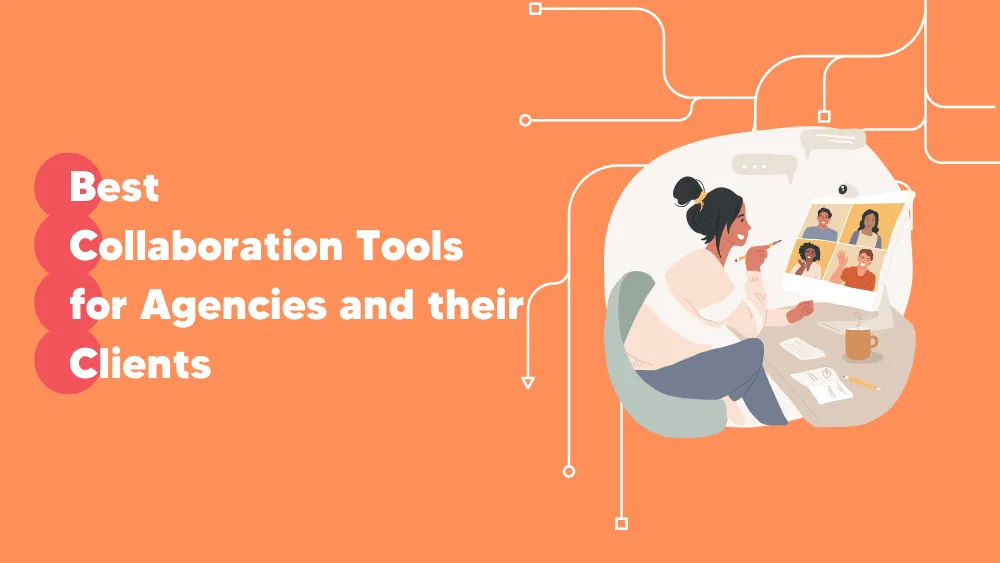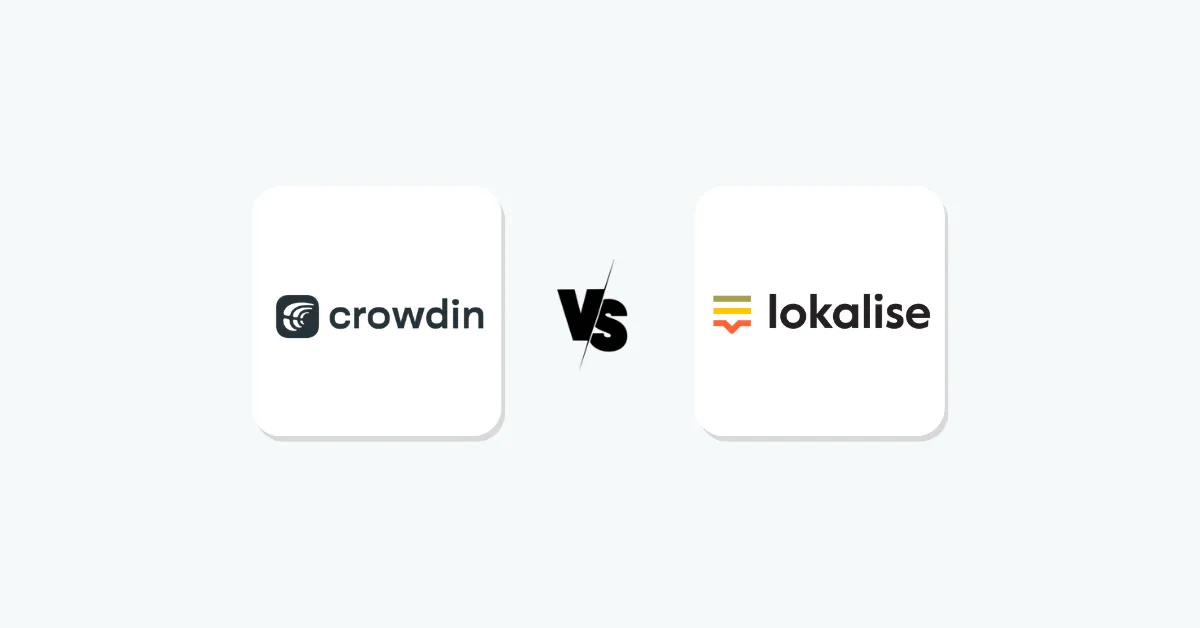As remote work becomes part of our professional life and, at the same time, the normal business model of working, the demand for collaboration tools has grown significantly. These tools play an important role in improving productivity and fostering collaboration among remote teams.
They provide the means for teams to work together, strategize, and carry out projects seamlessly, regardless of their locations. When it comes to visual collaboration tools, Miro vs. FigJam are two prominent names that have revolutionized the way teams interact and collaborate.
We’ll compare Miro and FigJam’s key features, user-friendliness, pricing, and overall value. This unbiased analysis will help you determine which software is best for your needs.
Overview of Miro and FigJam
Now, let’s examine Miro vs. FigJam in depth, but first, let’s understand what each one is doing.
What is Miro?
Miro is a popular collaborative digital whiteboard tool that offers teams a dynamic and interactive workplace. It provides various tools to promote creativity and optimize productivity, such as sticky notes, flowcharts, mind maps, frameworks, etc. Miro is an ideal solution for brainstorming sessions, project planning sessions, and agile processes.
Plus, Miro easily connects with popular tools like Slack, Asana, and Microsoft Teams, making it a flexible solution for better team communication and productivity.

What is FigJam?
Let’s take a look at FigJam.
FigJam is an online whiteboard designed for design teams to brainstorm, sketch ideas, and create diagrams easily. Its simple drawing tools make it quick to visualize concepts, and it integrates smoothly with Figma, allowing teams to move seamlessly from brainstorming to detailed design work.
Whether you’re new or experienced, FigJam’s user-friendly interface makes it accessible to everyone. Plus, its affordable pricing plans make it a great option for small organizations, and it offers discounts for schools and students.

FigJam is a powerful tool that boosts team collaboration and creativity, making it essential for design teams looking to streamline their workflow and spark innovation.
Miro vs FigJam – Key Features Comparison
-
User Interface/Ease Of Use
Miro and FigJam, both team collaboration software, stand out in terms of simplicity of user interface and ease of use, but each meets different user preferences and needs.
Miro provides a versatile yet complex interface equipped with numerous tools and features. It is best for teams needing to perform various tasks such as brainstorming, mind mapping, and creating detailed project plans. Although its interface is intuitive, newcomers may initially find it a bit complex to understand—the reason is Miro’s expansive capabilities.
FigJam was developed with user experience in mind. It offers an accessible, user-friendly environment that makes collaboration easy for even newbie designers. However, do not think that this simplicity comes at the cost of functionality.
It offers a plethora of features that improve remote working among teams. Also, FigJam offers powerful illustration tools that integrate seamlessly with Figma.
All these features make FigJam the go-to choice for design teams looking for an efficient collaboration tool with a minimal learning curve.
-
Collaboration Features
Both Miro and FigJam offer robust collaboration features, but they cater to different aspects of teamwork.
Miro stands out with its robust suite of collaboration tools designed for diverse team needs. These tools support real-time editing, commenting, and video conferencing, making them perfect for distributed teams working on complex projects.
Additionally, its templates and integrations with other tools enhance its collaborative capabilities, eventually helping teams seamlessly incorporate workflows.

FigJam stands out by offering unique real-time collaboration features for design teams, allowing them to co-create illustrations and mockups more effortlessly.
Furthermore, its seamless integration with Figma helps designers seamlessly move between brainstorming in FigJam and design work on Figma, streamlining creative processes.
Plus, its interactive elements, such as sticky notes, shapes, and emojis, make collaborative sessions even more engaging. While both platforms excel in collaboration, FigJam’s focused approach makes it particularly effective for design-centric teams.

-
Types Of Templates
Moving to the templates, Miro and FigJam both offer various templates designed to facilitate collaboration and project management, each tailored towards specific aspects.
Miro team collaboration software features an expansive library of customizable templates designed to assist with different team collaboration scenarios- ranging from project planning and strategy mapping to brainstorming sessions and agile workflows.
FigJam offers more focused design-centric templates aimed at creative work than Miro does. Its templates facilitate brainstorming, wireframing, and user journey mapping tasks, among other tasks. In addition, FigJam’s templates are designed to work seamlessly with Figma.
The intuitive nature of FigJam’s templates makes it easy for design teams to visualize their ideas and collaborate effectively.
While Miro offers more versatile industry templates that enhance collaboration more broadly than its counterpart, FigJam excels in offering specific templates that facilitate design team creative processes more directly.
-
Third-Party Integration
Integrating third-party software into remote work tools is essential for enhancing functionality and workflow efficiency. As already mentioned above, FigJam offers smooth integration with Figma (its parent platform), which ultimately ensures smooth transitions between design and collaboration tasks.
On the other hand, Miro offers seamless integrations with an extensive array of third-party applications such as Slack, Microsoft Teams, and Google Workspace – giving it greater versatility across organizational workflows and collaborative environments. This wide integration capability extends Miro’s usefulness.
Miro Unique Features
- Advanced Diagramming and Mapping Tools: Miro offers diagramming capabilities, including flowcharts, UML diagrams, and mind maps, which are essential for detailed process planning and system design.
- Facilitation and Workshop Features: Tools like voting, timers, and video chat are built into Miro, enhancing facilitation for workshops, retrospectives, and large meetings.
- Extensive Integrations: Miro integrates with a wide array of enterprise tools such as Microsoft Teams, Jira, Confluence, and Salesforce, providing seamless workflow integration for complex projects.
FigJam Unique Features
- Interactive and Playful Elements: FigJam includes unique interactive features like cursor chats, emotes, and stamps.
- Seamless Integration with Figma: FigJam’s deep integration with Figma allows for a smooth transition from brainstorming to detailed design, facilitating a continuous workflow within the same ecosystem.
- Simplified and Focused Toolset: FigJam offers a more streamlined set of tools aimed at fostering creativity and quick brainstorming sessions.
These distinct features highlight Miro’s strength in detailed planning and extensive integrations, while FigJam excels in fostering creative and interactive collaboration within the design process.
Miro vs FigJam – Pricing Comparison
Miro Pricing
Free PlanMiro’s Free plan provides essential collaborative tools at no cost. It includes:
- Single Workspace with 3 Editable Boards: Users can start with a limited number of boards but benefit from unlimited team members.
- 2500+ Templates: Access to a vast library of templates to kickstart projects.
- 100+ Apps and Integrations: Seamless integration with popular tools like Zoom, Slack, and Google Drive.
- Basic Collaboration Features: Basic tools for real-time collaboration and video walkthroughs with Talktracks.
The Starter plan costs $8 per month per member (billed annually) or $10 monthly. It includes all features from the Free plan plus:
- Unlimited Boards: Users can create and manage an unlimited number of boards within a single workspace.
- Advanced Collaboration Tools: Enhanced collaboration features like unlimited Talktracks for interactive board walkthroughs.
- Project Management: Features like project folders for organizing boards and board version history for recovering content.
- Custom Templates and Brand Center: Customize boards with templates and maintain brand consistency.
The Business plan is priced at $16 per month per member (billed annually) and includes:
- All Starter Plan Features: Unlimited boards, advanced collaboration tools, and custom templates.
- Enterprise-Grade Features: Enhanced security with SSO integration (OKTA, OneLogin, Auth0), advanced support, and deeper integrations with tools like Jira.
- Customizable Solutions: Tailored solutions for large enterprises with custom pricing, advanced security and compliance add-ons, and scalable licensing options.
- Support: Premium 24/7 support, guaranteed SLAs, and a dedicated customer success program.
The Miro Business plan also come with a 14-day free trial, available for Free and Starter plan users.
EnterpriseMiro’s Enterprise plan is customized for large organizations and includes:
- All Business Plan Features: Unlimited boards, enterprise-grade security and compliance, and advanced integrations.
- Advanced Security and Compliance: Features like SCIM for license management, domain control, data classification, and SIEM integrations.
- Centralized Management: Improved control for managing users, integrations, and app usage across the organization.
- Premium Support: 24/7 support, dedicated customer success program, and enterprise-level SLAs.
- Flexible Licensing: Scalable licensing options to accommodate organizational growth as well as needs.
FigJam Pricing
FigJam remote work tool provides flexible pricing plans tailored for individual users, teams, educational institutions, and enterprises alike. Here is an outline of these pricing levels:
Free PlanFigJam’s Free plan provides essential design and collaboration tools at no cost. It includes:
- Figma Editor: Access to the core Figma design tools for creating and editing files.
- 3 Collaborative Design Files: Users can collaborate on up to 3 design files simultaneously.
- Unlimited Personal Drafts: Ability to create and save drafts for personal use.
- Basic File Inspection: Tools for inspecting design files and basic collaboration features.
The Pro plan is priced at $15 per seat per month (20% savings when billed annually). It includes everything from the Free plan, plus:
- Unlimited Figma Files: Users can create and manage an unlimited number of design files.
- Team Libraries: Shareable libraries for team-wide design assets and components.
- Advanced Prototyping: Enhanced prototyping capabilities for interactive design previews.
- Dev Mode: Development mode for coding and integration purposes.
- View Annotations: Ability to view and manage design annotations within files.
- Advanced Inspection: Tools for detailed inspection and analysis of design elements.
- VS Code Extension: Integration with VS Code for seamless development workflows.
The Organization plan costs $45 per seat per month (or $25 per month for Dev Mode only, billed annually). It includes all Pro plan features, plus:
- Org-Wide Libraries: Centralized libraries for managing design assets across the organization.
- Design System Analytics: Insights and analytics to optimize design system performance.
- Branching and Merging: Version control features for managing design iterations.
- Private Plugins: Ability to develop and use custom plugins for internal use.
- Centralized File Management: Tools for centralized file organization and management.
- Unified Admin and Billing: Simplified administration and billing processes.
- Single Sign-On (SSO): Secure access management through single sign-on integration.
The Enterprise plan is priced at $75 per seat per month (or $35 per month for Dev Mode only, billed annually). It includes everything from the Organization plan, plus:
- Advanced Design System Theming: Customizable theming options for design systems.
- Sync Variables to Code via REST API: Integration capabilities to sync design variables with code.
- Default Libraries by Workspace: Configurable default libraries based on workspace needs.
- Set Default Code Language: Specify default coding languages for integration purposes.
- Pin and Auto-Run Plugins: Tools for pinning and automating plugin functionality.
- Dedicated Workspaces for Teams: Separate workspaces for teams to manage projects independently.
- Guest Access Controls: Manage and control guest access to design files and projects.
- Seat Management via SCIM: Automated seat management using System for Cross-domain Identity Management (SCIM).
- Idle Session Timeout: Security feature for automatically logging out idle sessions.
- Advanced Link Sharing Controls: Enhanced controls for sharing and managing access to design files and resources.
Real-World Applications – Miro Vs. FigJam
Miro is popular with agile coaches, developers, and strategists for its flexible tools, including templates for sprint planning and diagramming complex systems.
While, FigJam, integrated with Figma, is designed for UX/UI designers, product managers, and educators, focusing on brainstorming and quick prototyping for creative collaboration.
But let’s see some of the teams and industries that can use Miro and FigJam.
Industries for Miro
- Technology and Software Development: Used for agile planning, sprint retrospectives, and product roadmaps.
- Education: Facilitates interactive lessons, student projects, and remote teaching.
- Consulting and Professional Services: Employed for client workshops, strategic planning, and process mapping.
- Healthcare: Utilized for patient journey mapping, training sessions, and interdisciplinary collaboration.
- Marketing and Design: Supports brainstorming, creative campaigns, and design thinking workshops.
Types of businesses for Miro
- Large enterprises need extensive integration capabilities and detailed project management.
- Small to medium-sized businesses (SMBs) seeking versatile collaboration tools.
- Educational institutions implementing interactive and remote learning strategies.
- Consulting firms conducting complex client engagements and workshops.
Industries for FigJam
- Design and Creative Agencies: Ideal for brainstorming sessions, concept development, and client presentations.
- Education: Used for collaborative teaching, interactive classes, and student group projects.
- Product Management: Facilitates ideation sessions, user journey mapping, and feature prioritization.
- Startups: Assists in collaborative innovation, rapid prototyping, and team alignment.
Types of clients for FigJam
- Design teams requiring seamless integration with Figma for end-to-end design workflows.
- Educational institutions focus on creative collaboration and engaging learning environments.
- Product managers and startup teams emphasize quick, interactive brainstorming and agile development.
- Creative professionals seeking a playful and engaging platform for idea generation and workshops
Final Verdict for Miro vs. FigJam
In the Miro vs. FigJam debate, the right choice depends on your team’s needs and workflow. If you ask what Miro is, I hope this article answers. Miro shines with its strong collaboration tools and customization, making it ideal for agile teams, business strategists, and those handling complex planning.
FigJam, integrated with Figma, is perfect for UX/UI designers, product managers, and creative teams, thanks to its easy-to-use design tools and seamless prototyping. To decide, think about what matters most—broad collaboration or design-focused workflows—and try both platforms to see what fits best.
You Should Choose Miro If:
- You need advanced tools for creating flowcharts, UML diagrams, and mind maps.
- Rely on integrations with a wide range of tools.
- You conduct workshops and need features like voting, timers, and video chat.
- You require a platform that supports diverse use cases.
- In need of scalable solutions with enterprise-level features and security.
You Should Choose FigJam If:
- You value an interactive environment with features like cursor chats, emotes, and stamps.
- You use Figma and need a seamless transition from brainstorming to detailed design.
- You prefer a simplified toolset that allows for quick onboarding and easy collaboration.
- The focus is on brainstorming sessions, concept development, and fostering creativity.
- Want an economical collaborative space, especially suitable for smaller teams and startups.







